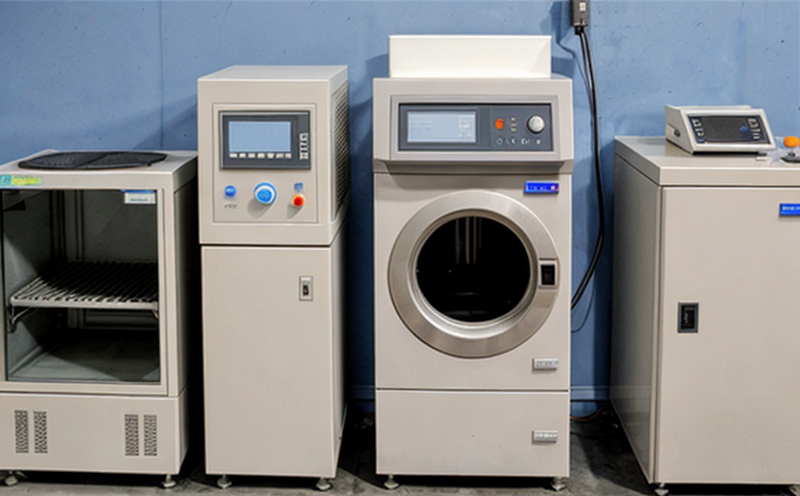ASTM E3247 Reactivity Testing of Dispersed Nanomaterials in Aqueous Systems
The ASTM E3247 standard provides a comprehensive framework for assessing the reactivity of dispersed nanomaterials in aqueous solutions. This service is crucial for ensuring that nanomaterials are stable and safe when used in various applications, from pharmaceutical formulations to industrial coatings.
Nanomaterials have unique physical and chemical properties due to their small size, which can significantly affect their behavior in different environments. Reactivity testing ensures that these materials do not undergo harmful or unpredictable reactions under the conditions they will encounter during use. This service is particularly important for industries such as pharmaceuticals, cosmetics, electronics, and environmental remediation.
The ASTM E3247 method involves dispersing nanomaterials in water according to specified protocols and then monitoring their reactivity over time. The test can evaluate the stability of nanoparticles, their potential to aggregate or form complexes, and any changes in surface chemistry that could affect performance or safety.
Specimen preparation is a critical step in this testing process. Nanomaterials must be thoroughly dispersed in water using appropriate techniques such as sonication or ultrasonication to ensure uniform distribution. The stability of the dispersion is then assessed by measuring particle size, zeta potential, and optical properties like turbidity.
The test conditions are carefully controlled to simulate real-world scenarios where nanomaterials might be used. For instance, the pH level, temperature, and ionic strength of the aqueous medium can influence reactivity. By varying these parameters, we can determine how sensitive the nanomaterial is to environmental factors.
The testing apparatus includes advanced analytical instruments such as dynamic light scattering (DLS), electrophoretic light scattering (ELS), and UV-Vis spectrophotometry. These tools provide precise measurements of particle size distribution, charge stability, and optical properties, which are essential for evaluating reactivity.
Acceptance criteria for the ASTM E3247 test are based on international standards such as ISO 13390:2015 for particle size analysis. The results must meet predefined thresholds to indicate acceptable reactivity levels of nanomaterials in aqueous systems. This ensures that any potential risks associated with reactive behavior can be identified and mitigated before product release.
By conducting this test, we help clients ensure compliance with regulatory requirements and industry best practices. This service supports the development of safe and effective products while enhancing overall quality management within organizations.
- The ASTM E3247 method is widely recognized for its reliability in assessing nanomaterial reactivity.
- It provides valuable insights into how nanomaterials behave in aqueous environments, aiding informed decision-making.
- The test results are essential for regulatory compliance and product safety.
The service is particularly beneficial for companies involved in developing new formulations or improving existing products. By identifying potential issues early on, this testing ensures that nanomaterials meet stringent quality standards before commercialization.
Why It Matters
The reactivity of dispersed nanomaterials in aqueous systems is a critical factor influencing their performance and safety across various industries. Understanding how these materials behave under different conditions helps prevent unintended reactions that could lead to product failures or environmental hazards.
In pharmaceutical applications, for example, nanomaterials may interact with other components in the formulation, altering drug efficacy or stability. In cosmetics, they might aggregate into larger particles over time, affecting texture and application properties. In industrial coatings, reactive behavior can compromise durability and adhesion. Environmental remediation efforts could also be compromised if nanoparticles react unpredictably in soil or water.
By conducting ASTM E3247 reactivity testing, organizations gain a deeper understanding of their nanomaterials' characteristics. This knowledge enables them to optimize formulations, enhance product performance, and ensure regulatory compliance. Ultimately, this service supports innovation while minimizing risks associated with the use of nanotechnology.
Environmental and Sustainability Contributions
The reactivity testing of dispersed nanomaterials in aqueous systems plays a vital role in promoting environmental sustainability by ensuring that nanomaterials used in various applications do not pose undue risks to ecosystems. By identifying potential reactive behaviors, this service helps prevent the release of harmful substances into natural environments.
Incorporating ASTM E3247 testing into product development processes supports sustainable practices by encouraging the use of environmentally friendly materials and formulations. This approach aligns with broader initiatives aimed at reducing waste and minimizing ecological impact.
The results from this testing contribute to more informed decision-making, allowing organizations to select nanomaterials that are both effective and safe for their intended purposes. By fostering responsible innovation, this service promotes a greener future where technology serves the greater good without compromising environmental integrity.
Competitive Advantage and Market Impact
- Ensures compliance with international standards and regulations.
- Provides valuable insights into how nanomaterials behave in aqueous environments, aiding informed decision-making.
- Enhances product safety and reliability, leading to improved market reputation.
- Supports the development of innovative products that meet strict quality standards.
The ability to accurately assess reactivity through ASTM E3247 testing gives organizations a competitive edge by enabling them to produce safer, more effective products. This service not only meets regulatory requirements but also sets a new benchmark for excellence in nanomaterial research and development.





